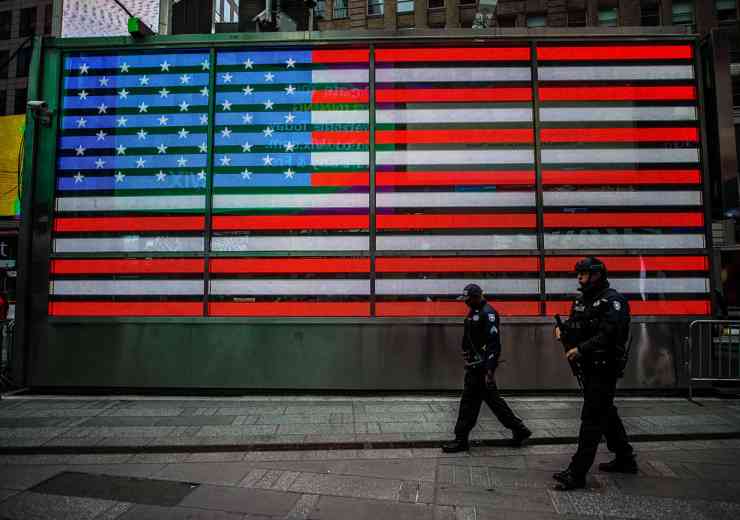Blasting away terrorist aims
 But there are ways to mitigate the damage from an explosion, writes Steve Chambers
But there are ways to mitigate the damage from an explosion, writes Steve Chambers
The recent terrorist attack at the Westgate mall in Nairobi, Kenya grabbed headlines and shocked the world. This highly publicised event brought home the fact that terrorist attacks and bombings are increasingly a part of everyday life, and not just in remote third world locations. Western governments far away from conflict hotspots are also on the lookout for possible terrorist threats to both high profile targets and large gatherings of people.
The greatest terrorist threat security managers should address and prepare for are bombs and explosives. A quick check of the headlines, or a Google search, will show that a bomb goes off somewhere in the world on a daily basis, often causing significant injuries and loss of life. With all the unrest and uncertainty in the world today the chance of a terrorist bomb attack happening is very real.
IEDs and explosives, whether carried in a car, worn as a suicide vest or buried in the ground are simple to make, deploy and conceal, and they can have devastating effects. With their ability to destroy property, kill people and cause economic disruption far in excess of their size it’s no wonder we are seeing an increased use of bombs and explosives by political and terrorist groups because, simply put, they achieve the terrorists aims.
An Ounce of prevention
Because no potential target can be made terrorist proof nor can the threat of attack be completely eliminated, it’s imperative that property managers and security personnel consider taking measures to counter explosive and terrorist threats. The first step is to make a threat assessment to determine the probability and likelihood of a terrorist incident targeting a particular building or location. The answer might be that the probability of an attack is so low and the target so low value that minimal precautions need to be taken, or it may conclude that major steps need to be implemented immediately.
Most terrorist bombings are targeted at high profile buildings or large gatherings of people. The objective being to cause as much damage as possible or to kill as many people as possible, thereby garnering headlines and publicity for whatever cause or injustice the group espouses. As security professionals our job is to thwart these attacks, or at a minimum, lessen the damage and loss of life caused by these incidents.
Glass is both friend and foe
Building glass is the most vulnerable part of a buildings envelope when it comes to explosives. To make matters worse, not only is glass the most structurally weak part of a building, it can and often is used to exacerbate and intensify the effects of terrorist explosives.
During an anti-terrorist lecture I attended a few years ago it was mentioned that a pattern had emerged in several bombing incidents, including the Bali bombings back in 2002. This pattern was the use of two separate explosives timed to go off at different intervals. A small explosive designed to get attention and cause people to look out of their windows is detonated first, followed by a second, much larger explosive that shatters windows over a large radius causing devastating injuries with the fragmented glass.
Glass can cause a lot of damage and injuries for quite a distance. Studies show that most of the damage resulting from an explosion is caused by flying shrapnel and debris, and glass, which breaks into thousands of shards, is by far the deadliest component. This makes it imperative that security forces, building management and crisis planners look for effective ways to mitigate and lessen the potential damage and injury that can be caused by a blast. Detailed below, and ranked in order of simplicity and cost, are the objectives we need to meet to mitigate damage from an explosion.
Firstly limit glass fragmentation and flying shards of glass, and keep the glass in the window frame and prevent it from dislodging and entering the building. Make sure you structurally support the window frame in the building structure to prevent it from dislodging from the structure, as well as maintain the structural integrity of the building.
The weakest part
As you can see blast mitigation efforts should be focused primarily on the glass. Because this is the weakest part of the structure with the most potential to cause injury and loss of life, it’s also the most cost effective mitigation solution one can take, making it ideal for both high and low probability targets.
For the purpose of this article I am going to consider a building retrofit, as the more modern technologies like ballistic glass and dual paned laminated glass are better suited for new construction buildings and can be quite cost prohibitive when retrofitted into an existing building. These are tough times economically throughout the world and while security is important, we certainly do not have unlimited funds available for solutions. The focus needs to be on blast mitigation methods that are simple, effective and affordable.
Achieving Reasonable Blast Protection
The first step in effectively protecting a building against terrorist bombs is to make an accurate threat assessment and to determine the level of acceptable damage. Blast mitigation measures can be very expensive and, since there is no way to make a building or structure completely blast or bullet proof we need to decide what protective measures need to be put into place given our budget and order of importance.
The threat level determines the likelihood of attack. A high profile public building is a more likely target than a B&B located in the English countryside and would require more in depth protective measures. This only makes sense.
How big a threat a bomb poses to a structure is determined by four factors: 1) The Net Explosive Quantity (NEQ) aka TNT Load Equivalent; 2) Standoff Distance, 3) Height of the structure and 4) Structural composition. Protection is increased when we can minimise the NEQ of the bomb and keep it as far away as possible. This can be accomplished by implementing effective perimeter control measures s to prevent unauthorized access to and near the building.
Vehicles can carry much larger loads of explosives than a suicide vest or backpack so limiting vehicle access near a likely target is critical. Measures like pedestrian entry controls and screening equipment for vehicles and personnel are ways of ensuring no major threat gets close to the target and, if one does, it’s a small device detonated at a safe distance away from the target.
Reinforce your glazing
Once adequate perimeter security controls have been established the next step should be to reinforce your glazing to limit the potential for flying shards of glass. This can be accomplished using security type window films, a proven way to quickly, easily and affordably protect glazing not only in a likely target, but on buildings nearby as well.
Simple, effective and relatively inexpensive, security films are the go-to solution for fast, effective and affordable glazing blast protection. Security films work by using strong adhesives to bond a polyester film securely to the glass. Typical bomb blast films range in thickness between 4 Mil and 24 Mil, with 7Mil and 8Mil being by far the most common and are tested and certified to contain pieces of glass in the event of an explosion. Once a film meeting the criteria outlined in by GSA Level C (USA) or ISO 16933 (UK/Europe) is properly installed on the glass in a buildings envelope you can be confident that this first objective has been achieved.
Our second objective, retaining the window glass within the frame can be accomplished with a window film attachment system. There are a variety of attachment methods available ranging from mechanical “batten‑bar” type systems to structural silicone wet glazed systems. While the exact method used is determined by glass type, frame type, budget and required level of protection they all work on the principle of securing the window film to the window frame, preventing the glass from dislodging and flying into the building in one large mass.
Achieving the third objective, supporting the frame in the structure, can be achieved by using anchoring bolts to secure the window frame to the building structure. The ability to do this in a retrofit situation may be limited by the existing frame type and building structure. Sometimes this simply cannot be done at a reasonable cost or without a major refurbishment of the building. For this reason this type of anchoring is typically done on new buildings and, with the exception of extremely high value targets, not with a retrofit.
The final component is reinforcement of the building structure itself and there are several technologies available which reinforce the structure to limit internal damage and personal injury. Typically these types of systems utilise coatings or fibres which bond to the structural elements or composite blocks of cladding material designed to absorb and reflect the pressure and shock waves of an explosion. Because of the high cost these systems are usually only deployed in high threat areas where frequent attacks take place.
Conclusion
The terrorist threat is real, is out there and prudence dictates that precautions need to be taken. Property managers, security and law enforcement personnel need to take a hard look at the security environment, make threat assessments of their own and then decide what measures need to be taken. As we’ve shown, effective blast mitigation can be easily and affordably achieved. Protecting the glazing also provides the lion’s share of the benefits of blast mitigation for a relatively affordable cost.
Steve Chambers is Managing Director of Pentagon Protection plc encompassing SDS Group Ltd and Pentagon Protection America..
Further information
www.pentagonprotection.com
digital issue




















